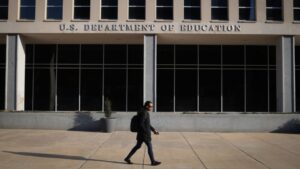The Return of Student Loan Collections: What You Need to Know
As of May 5, 2025, the U.S. Department of Education is officially resuming the involuntary collections of federal student loans that have fallen into default. This news is especially significant for the 5 million borrowers who currently find themselves in this distressing situation. The Office of Federal Student Aid will make use of the Treasury Offset Program, which enables the government to reduce or completely withhold payments—such as tax refunds and Social Security benefits—to recover overdue debts.
In a statement, U.S. Secretary of Education Linda McMahon emphasized the criticality of responsible borrowing. "American taxpayers will no longer be forced to serve as collateral for irresponsible student loan policies," she stated. This marks a departure from previous initiatives made during the pandemic, when debt forgiveness and payment pauses were offered. According to the Department of Education, more than 4 million borrowers are also classified as being in "late-stage delinquency," meaning they are over 90 days past due on payments.
Why Now?
For many, the pandemic provided a temporary reprieve from debt obligations, but as of late 2023, the student loan landscape has changed significantly. After the expiration of the federal payment pause in September 2023, borrowers were granted an additional year of protection against collections; however, that grace period is coming to an end. McMahon’s remarks echo a growing sentiment around accountability in student loan borrowing—a sentiment that hit home for many during the ongoing discussions surrounding education funding and debt cancellation.
However, borrowers should be especially cautious. The return of involuntary collections poses a serious financial risk, particularly to those who may have been unaware that their loans were in default.
What to Do If You’re in Default
If you receive an email from the Office of Federal Student Aid regarding your default status, the following steps are crucial:
-
Reach Out Immediately: Contact the government’s Default Resolution Group. Ignoring the issue will only worsen your financial situation.
-
Explore Repayment Options: Inquire about income-driven repayment plans that adjust your monthly payments based on your income.
-
Consider Loan Rehabilitation: This can help restore your credit and take your loans out of default. Successful rehabilitation typically involves making a series of voluntary, on-time payments.
- Educate Yourself: Understanding your rights and responsibilities as a borrower helps you better manage your loans. Higher education expert Mark Kantrowitz notes, "Payment is due even if you are dissatisfied with the quality of the education you received." Knowledge is your best defense.
Looking Ahead: Navigating Loan Repayment
As we move further into 2025, it’s crucial to consider the broader implications of these changes. The job market is still adjusting in the wake of the pandemic, and scores of recent graduates may have no hands-on experience with loan repayment. For them, understanding the intricacies of federal student loans is essential—not just as a means of avoiding collections, but also as a cornerstone of personal finance management going forward.
At Extreme Investor Network, we believe in empowering our readers with actionable strategies and insights. If you are navigating the complexities of student loans, take a moment to explore our resources, including expert-led webinars and personal finance workshops, aimed at helping individuals like you succeed amidst financial challenges.
Final Thoughts
The landscape of student loans is evolving, and being informed is your greatest ally. Whether you’re in default or trying to prevent future delinquency, take steps to ensure you’re actively managing your financial responsibilities. Remember, financial health is a continuous journey, and Extreme Investor Network is here to guide you every step of the way. Join our community today and take control of your financial future!

